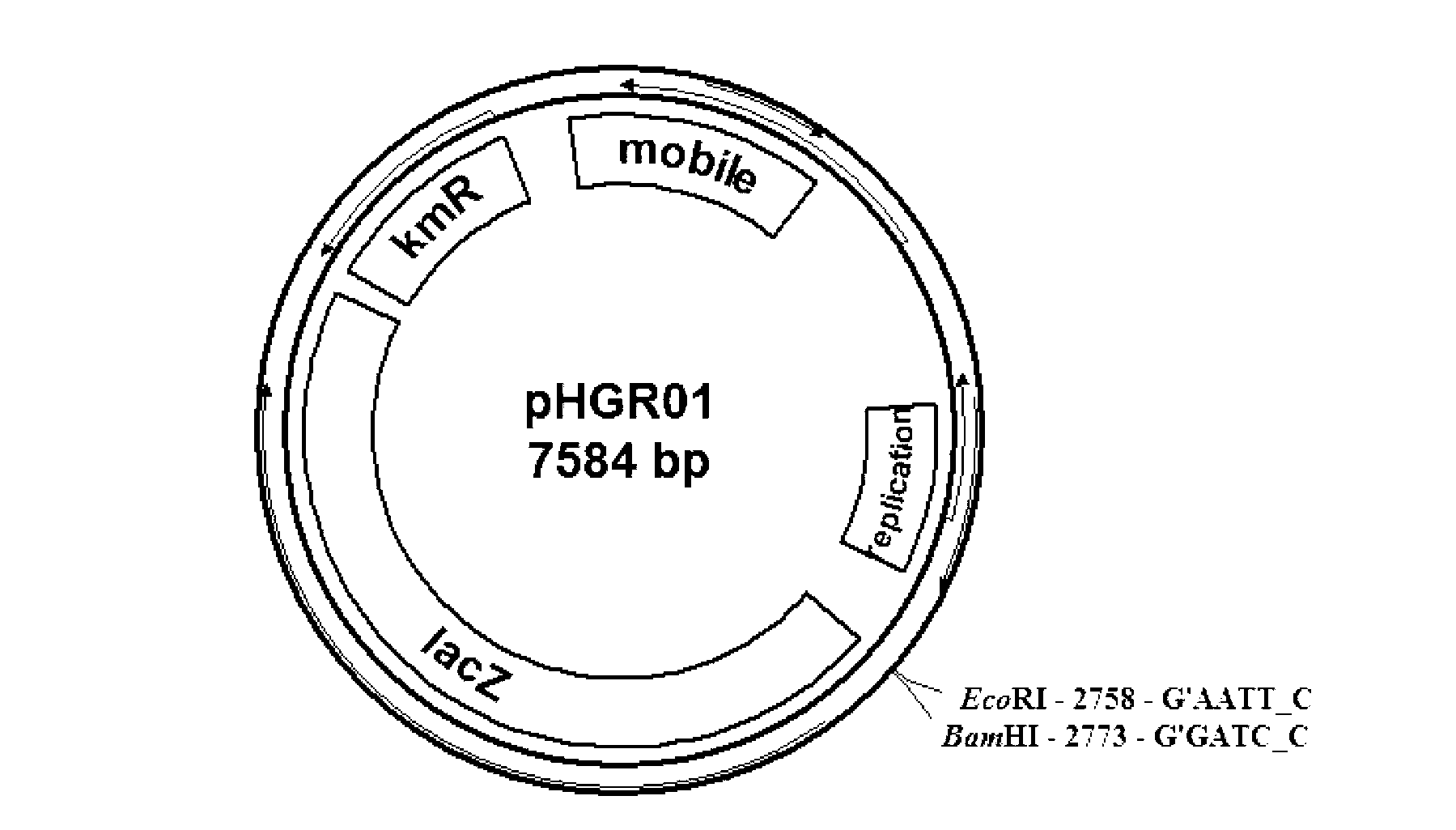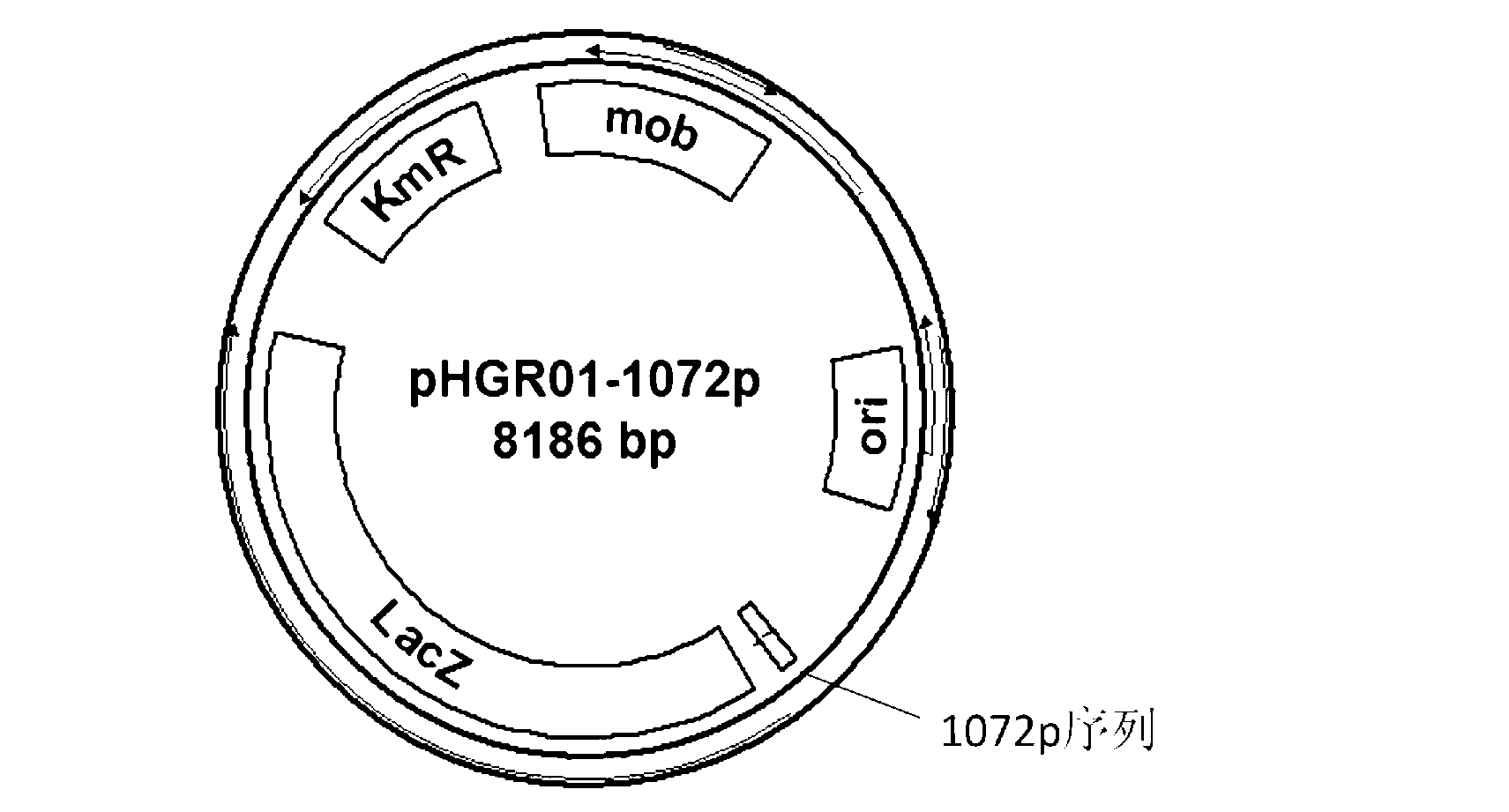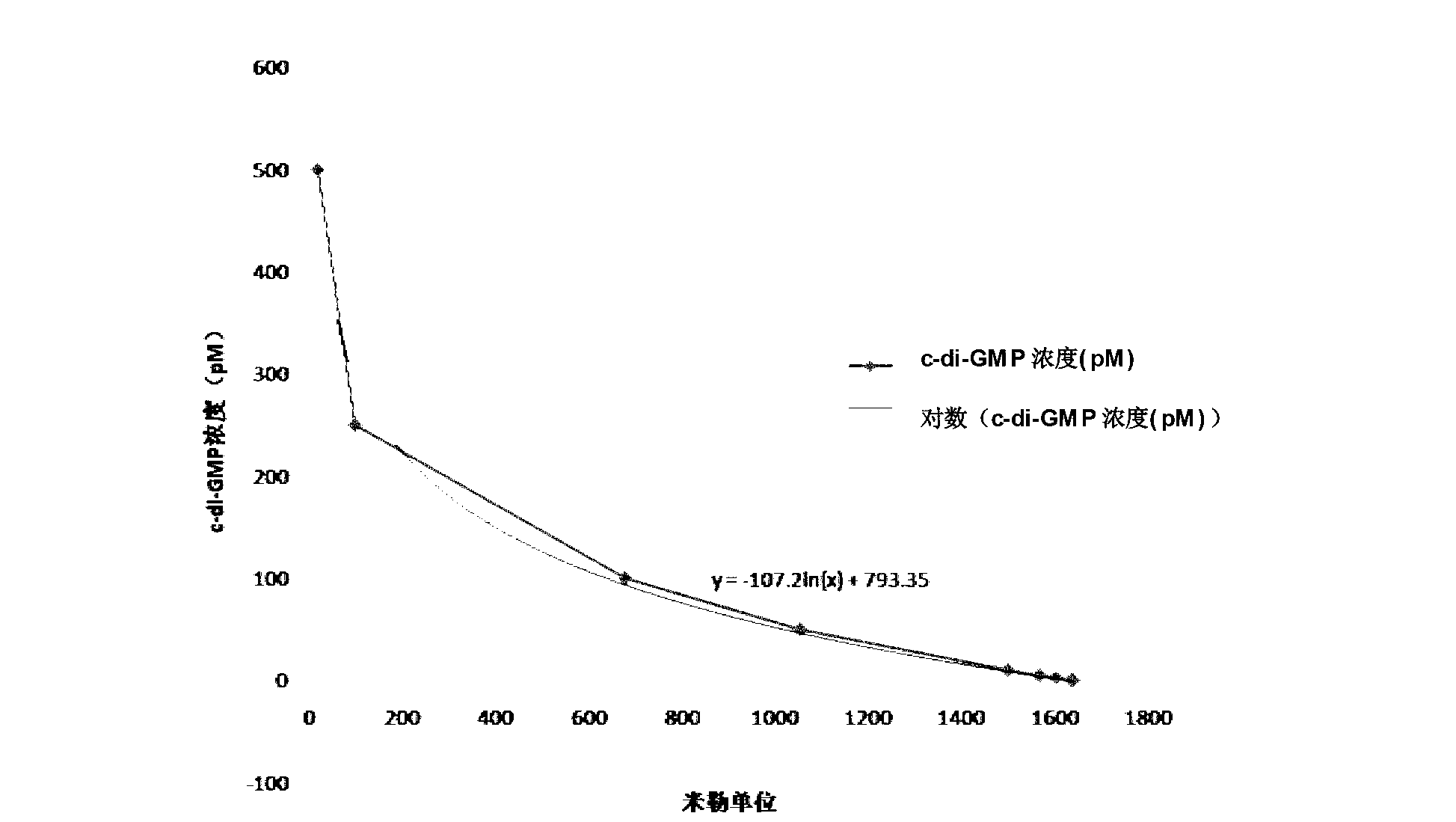Reporting system for detecting cyclic diguanylic acid (c-di-GMP) content in living cells and application of reporting system
A cyclic diguanylic acid and reporting system technology is applied in the field of reporting systems for detecting the content of cyclic diguanylic acid in living cells, and achieves the effects of authentic and credible detection results, simple and easy operation methods, and convenient detection.
- Summary
- Abstract
- Description
- Claims
- Application Information
AI Technical Summary
Problems solved by technology
Method used
Image
Examples
Embodiment 1
[0041] Embodiment 1 Contains the construction of the recombinant plasmid of reporter system
[0042] 1 PCR amplification of sequence fragment containing promoter-riboswitch-SD
[0043] Using the genomic DNA of Shewanella oneidensis MR-1 as a template, primers were used for PCR amplification to obtain a fragment (SEQ ID No.4) containing the promoter-riboswitch-SD sequence;
[0044] The primer sequences are:
[0045] Upstream primer 1072p-5': 5'-GGAATTCTGGCATTTGACATAAGCACA-3'; the underline is the EcoR I restriction site (SEQ ID No.6);
[0046] downstream primer
[0047] The underline is the Hind III restriction site, and the boxed sequence is the first 14 bp of the coding sequence of the lac Z gene (SEQ ID No.7); it was synthesized by Shanghai Sangon Bioengineering Technology Co., Ltd.
[0048] The PCR system is:
[0049]
[0050] The PCR conditions were: pre-denaturation at 95°C for 2 min; denaturation at 95°C for 10 s, annealing at 57°C for 20 s; extension at 72°C fo...
Embodiment 2
[0064] Example 2 Obtain the conversion relationship between intracellular c-di-GMP content and reporter gene expression level
[0065] (1) Convert WM3064
[0066] Take out the competent cell WM3064 prepared in advance and stored in -80℃ refrigerator, put it on ice for 5-10min; add 5μL pHGR01-1072p recombinant plasmid, mix well; put it on ice for 30min, heat shock at 42℃ for 90s, add Add 1mL of liquid LB medium to a final concentration of 300μM diaminopimelic acid (DAP), shake slowly at 37°C for 60min; spread onto LB plates containing 50μg / mL kanamycin (KM) and 300μM DAP, at 37°C Culture overnight;
[0067] (2) Identification of positive clones
[0068] Pick a single clone and place it in 20 μL ddH 2 In O, cook at 100°C for 5 minutes, and use pHGR01 universal primers as templates for PCR amplification. The sequence of the pHGR01 universal primers is as follows:
[0069] Upstream primer R01-F: 5'-CAGGCATTTGAGAAGCACACG-3' (SEQ ID No.8);
[0070] Downstream primer R01-R: 5'-C...
Embodiment 3
[0091] Example three specificity analysis
[0092] S pHGR01-1072 was cultured in LB liquid medium containing c-di-GMP structural analogue c-di-AMP (20 μM, 500 μM) to detect whether the reporter system of the present invention specifically binds to intracellular c-di-GMP, and the results are as follows Figure 4 shown.
[0093] Depend on Figure 4It can be seen that the reporter system of the present invention can specifically bind intracellular c-di-GMP and indicate the content of intracellular c-di-GMP.
PUM
 Login to View More
Login to View More Abstract
Description
Claims
Application Information
 Login to View More
Login to View More - R&D
- Intellectual Property
- Life Sciences
- Materials
- Tech Scout
- Unparalleled Data Quality
- Higher Quality Content
- 60% Fewer Hallucinations
Browse by: Latest US Patents, China's latest patents, Technical Efficacy Thesaurus, Application Domain, Technology Topic, Popular Technical Reports.
© 2025 PatSnap. All rights reserved.Legal|Privacy policy|Modern Slavery Act Transparency Statement|Sitemap|About US| Contact US: help@patsnap.com



